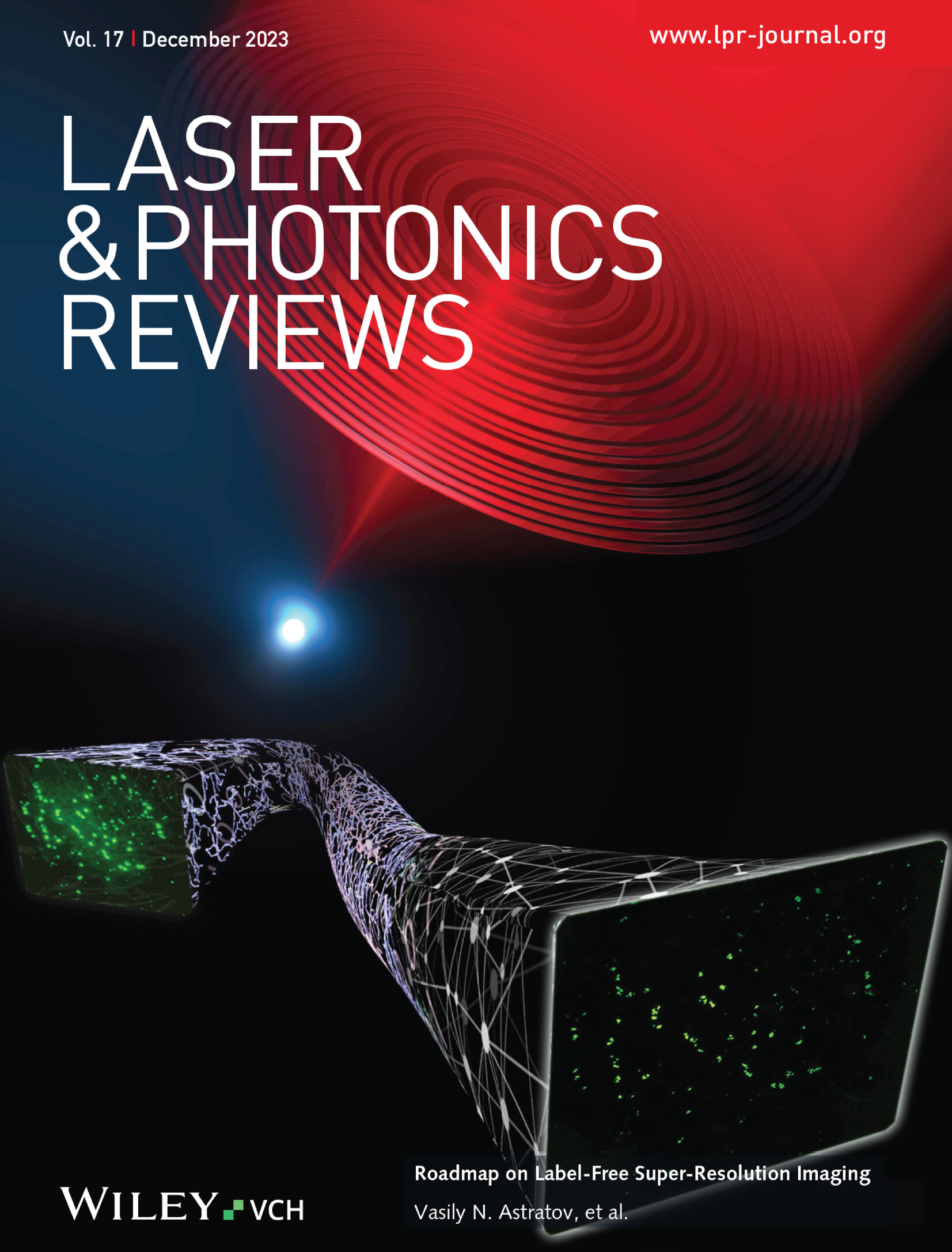荧光猝灭SERS检测:用大π共轭有机分子修饰的二维MoS2平台进行细菌检测
IF 9.8
1区 物理与天体物理
Q1 OPTICS
引用次数: 0
摘要
表面增强拉曼光谱(SERS)已成为生物检测和分析的有力工具。然而,它面临着来自荧光干扰的挑战。本研究通过界面带对准开发了具有s型结的CuPc/MoS 2异质结构。对亚甲基蓝(MB)的SERS评价表明,亚甲基蓝的检出限低至10 ~ 10 M,是原始组分的23.37倍。同时,通过非辐射电荷重组实现了0.925的荧光猝灭分数,有效解决了荧光干扰问题,通过MB分子的荧光猝灭实现了SERS信号的显著增强。该底物对大肠杆菌的检测灵敏度高达0.611 CFU mL−1。值得注意的是,该平台成功地监测了聚苯乙烯纳米塑料(PS-NP)与细菌的相互作用,揭示了通过黄素腺嘌呤二核苷酸(FAD)信号变化的尺寸依赖性膜破坏机制。本研究为非金属SERS衬底在环境监测和纳米毒理学研究中的应用奠定了基础。本文章由计算机程序翻译,如有差异,请以英文原文为准。

Fluorescence Quenching SERS Detection: a 2D MoS2 Platform Modified with a Large π-Conjugated Organic Molecule for Bacterial Detection
Surface-enhanced Raman spectroscopy (SERS) has emerged as a powerful tool for biological detection and analysis. However, it is confronted with challenges from fluorescence interference. This study develops a CuPc/MoS₂ heterostructure with S-scheme junction through interfacial band alignment. The SERS evaluation of methylene blue (MB) demonstrated a detection limit as low as 10−10 M, which is 23.37-fold higher than that of the pristine components. Meanwhile, a fluorescence quenching fraction of 0.925 is achieved by non-radiative charge recombination, effectively addressing the issue of fluorescence interference and achieving a significant enhancement of SERS signals through the fluorescence quenching of MB molecules. The substrate demonstrates a detection sensitivity of up to 0.611 CFU mL−1 against Escherichia coli (E. coli). Notably, the platform successfully monitored polystyrene nanoplastic (PS-NP)-bacteria interactions, revealing size-dependent membrane disruption mechanisms through flavin adenine dinucleotide (FAD) signal variations. This study establishes a development for non-metallic SERS substrates in environmental monitoring and nanotoxicology research.
求助全文
通过发布文献求助,成功后即可免费获取论文全文。
去求助
来源期刊
CiteScore
14.20
自引率
5.50%
发文量
314
审稿时长
2 months
期刊介绍:
Laser & Photonics Reviews is a reputable journal that publishes high-quality Reviews, original Research Articles, and Perspectives in the field of photonics and optics. It covers both theoretical and experimental aspects, including recent groundbreaking research, specific advancements, and innovative applications.
As evidence of its impact and recognition, Laser & Photonics Reviews boasts a remarkable 2022 Impact Factor of 11.0, according to the Journal Citation Reports from Clarivate Analytics (2023). Moreover, it holds impressive rankings in the InCites Journal Citation Reports: in 2021, it was ranked 6th out of 101 in the field of Optics, 15th out of 161 in Applied Physics, and 12th out of 69 in Condensed Matter Physics.
The journal uses the ISSN numbers 1863-8880 for print and 1863-8899 for online publications.

 求助内容:
求助内容: 应助结果提醒方式:
应助结果提醒方式:


